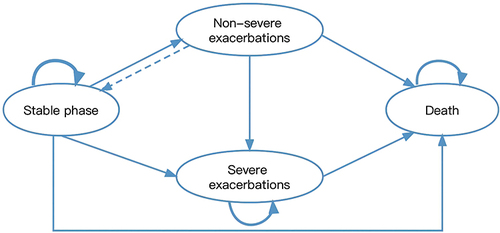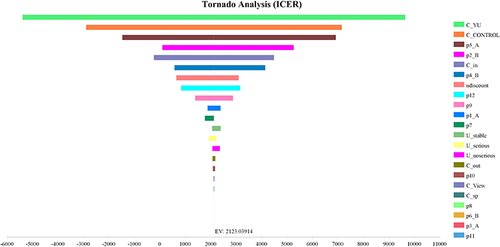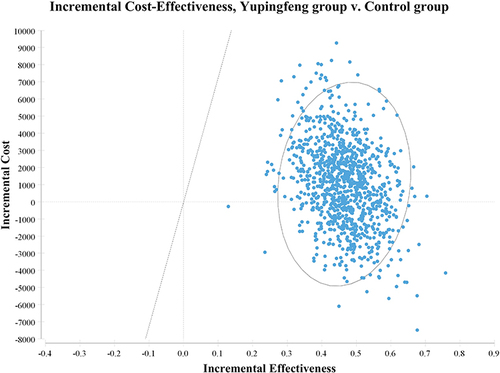Figures & data
Figure 1 Markov bubble chart of Yupingfeng granules in the treatment of chronic obstructive pulmonary disease. We set the following assumptions for the model: a. The nonsevere exacerbation stage was a relatively stable period during the longer disease course of COPD. Therefore, the mortality rate in the nonsevere exacerbation period was assumed to be the natural mortality rate of the Chinese population. b. Referring to relevant literature at home and abroad, it is shown that most patients in the nonsevere exacerbation stage will return to the stable stage after treatment. Therefore, the model sets the transfer branch from the nonsevere exacerbation stage to the stable stage. In addition, most treatments will make patients in the nonsevere exacerbation stage return to the stable stage. We assumed that the transition probabilities from the nonsevere exacerbation phase to the stable phase were the same between the two treatment regimens in this study. c. Since severe exacerbation was defined as the need for hospitalization, it is assumed that returning from the severe exacerbation period to the stable period was difficult, and only the path from the severe exacerbation period to the current state or death was set. d. It was assumed that in one year, each state generated two medical service fees and examination fees. An additional outpatient treatment fee was required in the nonsevere exacerbation period, and an additional inpatient fee was required in the severe exacerbation period.

Table 1 Markov Model Cost Parameters and Sources
Table 2 Markov Transition Probability Parameters and Sources
Table 3 Utility Parameters and Sources
Table 4 Cost-Effectiveness of Yupingfeng Group Compared with Placebo Group
Figure 2 One-way sensitivity analysis tornado diagram.



